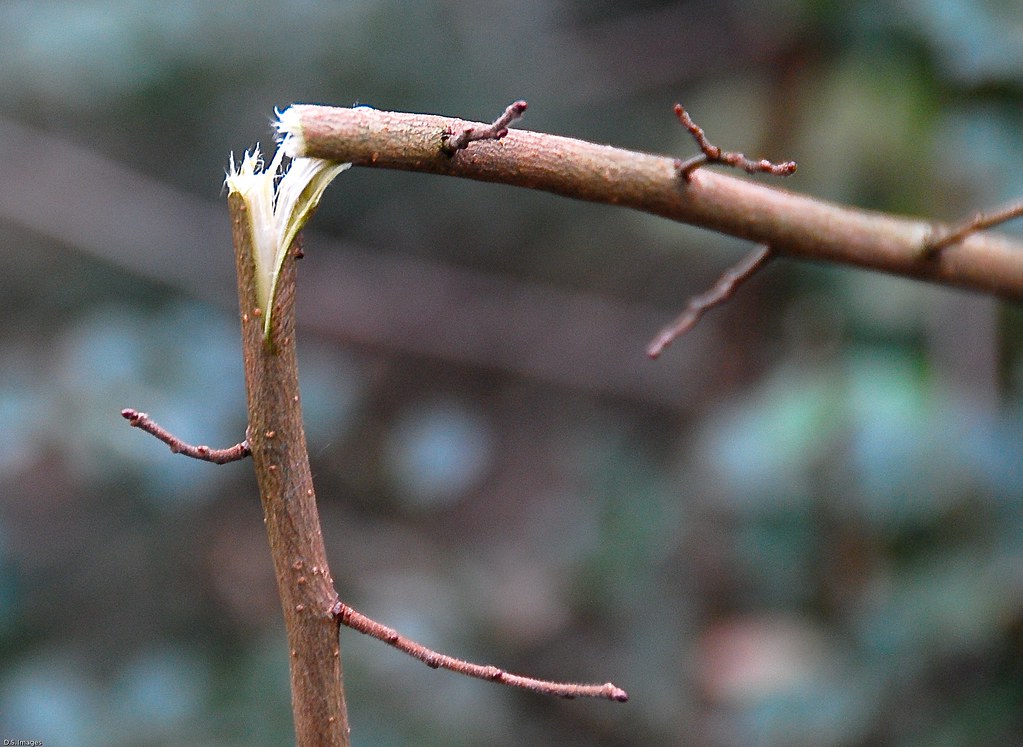 Tree-shaped patterns in nature are frequently found in both the organic and inorganic domains and
demand a common explanation. One type of explanation is a functional one. Many trees
efficiently drain basins. Electrical discharges can be modeled as draining electrical
charge and propagating cracks do something similar with stress. The maximum entropy production
principle generalizes this idea so that it can be applied to evolutionary family trees
as well as to physical trees.
Tree-shaped patterns in nature are frequently found in both the organic and inorganic domains and
demand a common explanation. One type of explanation is a functional one. Many trees
efficiently drain basins. Electrical discharges can be modeled as draining electrical
charge and propagating cracks do something similar with stress. The maximum entropy production
principle generalizes this idea so that it can be applied to evolutionary family trees
as well as to physical trees.An alternative approach to modeling natural tree-shaped systems is to enumerate the type of operation that are possible on them, and develop specific theories for each type of operation. This is the approach taken by Darwinism - which breaks the dynamics of family trees into reproduction with selection, mutation and recombination. Darwinism also applies to branch tip dynamics in other tree systems - since branch tips split, mutate, undergo selection and inherit properties from their parent(s). At the very least they inherit their position.
I've argued elsewhere that positional inheritance is ubiquitous and that this means that many inorganic systems exhibit Darwinian dynamics. For example, the tree-shape propagating cracks, electrical discharges and fractal drainage basins are family trees. In these systems, the branching tips of the trees form a population which is subject to copying with variation and selection. As a result conventional Darwinian concepts of fitness and adaptation apply - and these systems act as optimizers in a similar way to what is seen with genetic algorithms.
With positional inheritance, most physical tree-shaped patterns in nature are regarded as being family trees. However the fact that these trees are physical trees (rather than being historical ones) means that their branches might undergo dynamic changes. Because a family tree is historical its branches form a fixed structure which can't be changed once it has formed. However, the branches of other natural tree-shaped patterns (e.g. streams or with electrical discharges) sometimes do change their structure over time. The branches don't just grow at the tips, they wave and break.
What this means is that we need a theory of branch dynamics - in addition to the Darwinian dynamics associated with the population of branch tips.
Basic branch operations that do not change branch topology include:
- Branch widening;
- Branch narrowing;
- Branch lengthening;
- Branch shortening;
Specific theories relating to these branch operations are generally domain specific. However there may be commonalities between the operations in different domains. Modeling such commonalities is part of the study of branch dynamics, though it is beyond the scope of this post.
Tree dynamics are of theoretical interest because trees are common natural objects. It is also noteworthy that it is possible to recover traditional Darwinism from the theory by considering the special case where the tree branches become fixed once they are created and only the branch tips evolve. The principles of tree dynamics are a superset of those in Darwinism.










I have been thinking that versioning, like software configuration management and version control, or even component or model numbers (I've just been through the joys of a total PC upgrade), are actually indices to species of some genus of cultural evolution. In that case, the genome sequence, could well be thought of as some phenetic index of biology: what is my "Gattaca" number?
ReplyDeleteYour Branch Dynamics seems suited to Graph Theory, and might be modelled with a couple of extended parameters to the edges. I have not considered a time/dynamic dimention to trees, other than their growth. Of course, the meandering course of a river and formation of oxbow lakes, is a historical tree that inherits from previous water courses, but a dynamical property would enable the modelling of the evolution of such as rivers.